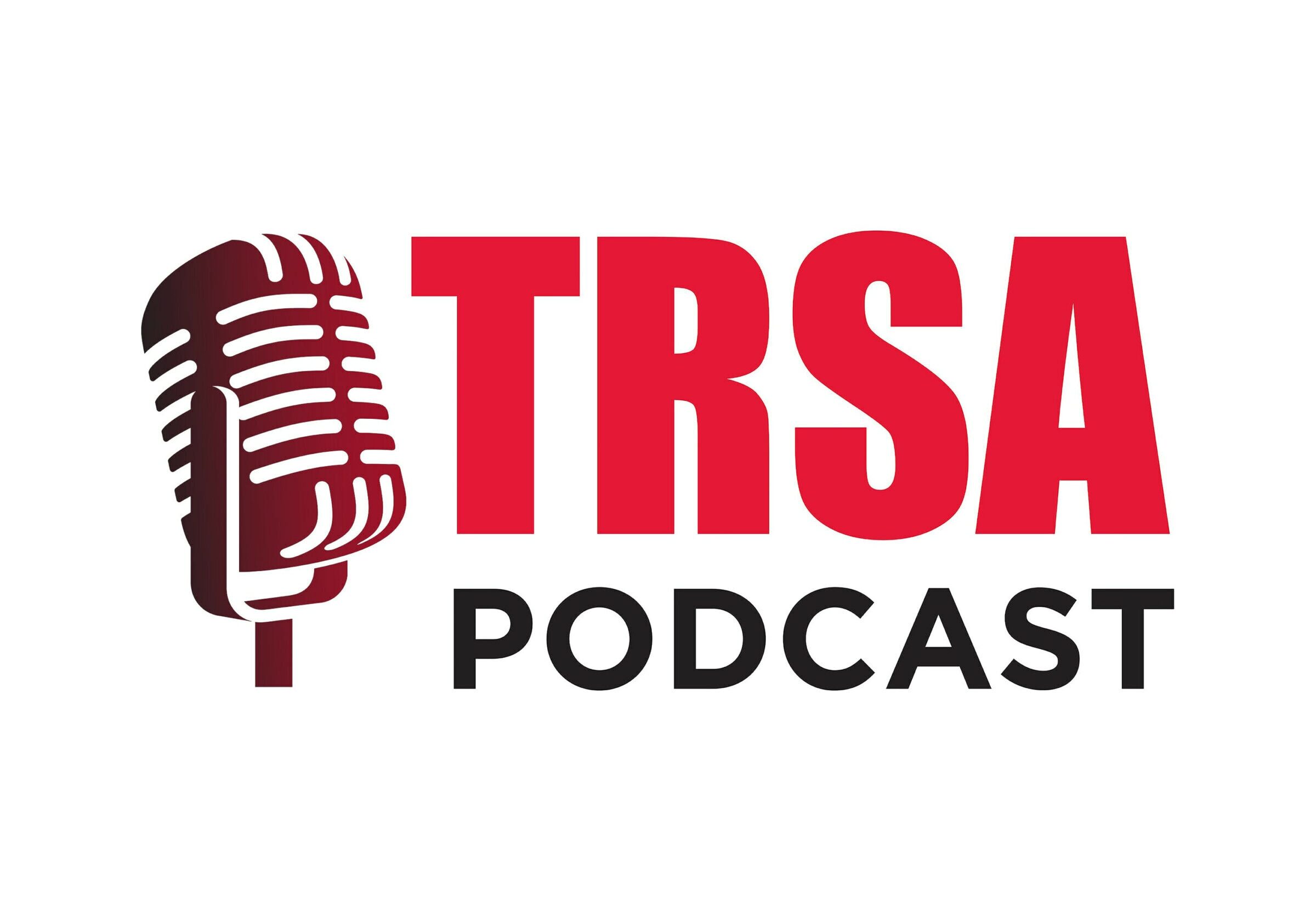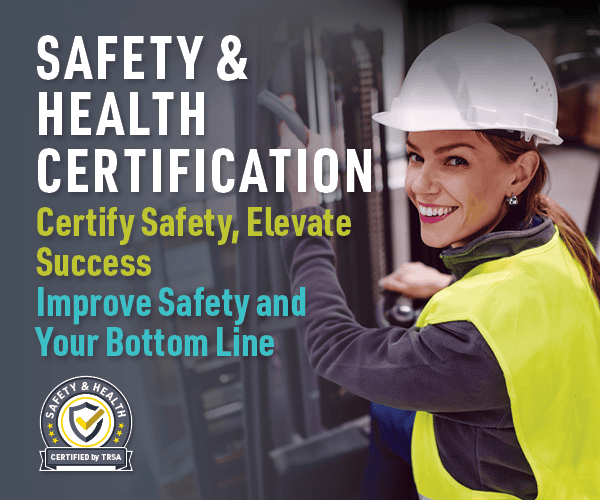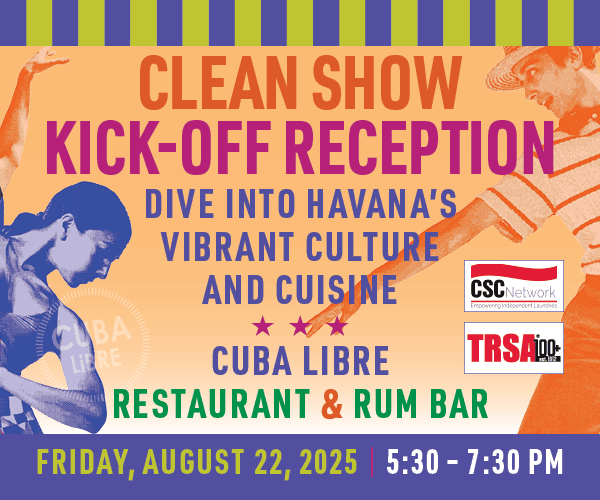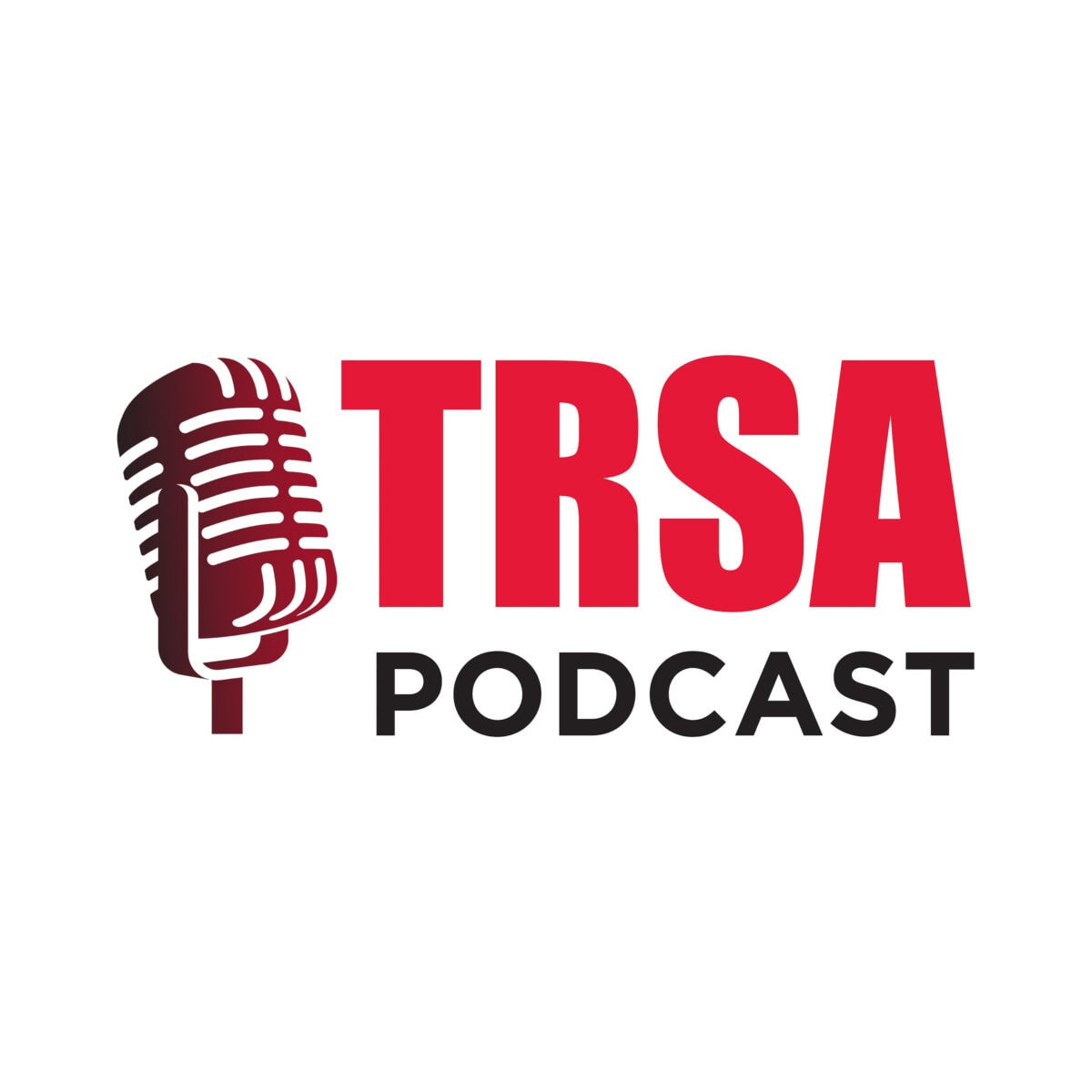Charles Crowell, the vice president of Milliken Table Linens, and Ben Fox, the director of sales and marketing at Alsco, discuss the state of the food-and-beverage market, as well as the importance of hygienically clean linens and uniforms as restaurants reopen across the United States and worldwide. For more COVID-19 news, information and resources for your linen, uniform and facility services company, visit our website.
Welcome to the TRSA podcast. Providing interviews and insights from the linen, uniform, and facility services industry. Most Americans might not realize it, but they benefit at least once per week from the cleanliness and safety of laundered, reusable linens, uniforms, towels, mats, and other products provided by various businesses and organizations. TRSA represents the companies that supply, launder, and maintain linens and uniforms. And in this podcast, we will bring the thought leaders of the industry to you.
I’m your host, Jason Risley, the senior editor of digital and new media at TRSA. This is the 30th episode of the Linen Uniform and Facility Services podcast. Thanks to everybody for tuning in and making our show a success. We couldn’t do it without our listeners. If you have any feedback for us or topics you’d like to suggest we cover in a future episode, please send us a message at podcasts attrsa.org.
The last few episodes of the podcast have focused on the COVID nineteen pandemic and its effects on the linen, uniform, and facility services industry. Make sure you go back and listen if you haven’t already. In today’s episode, we’ll hear from Charles Crowell, the vice president of Milliken Table Linens, and Ben Fox, the director of sales and marketing at ALSCO. Charles and Ben will discuss the state of the food and beverage market as well as the importance of hygienically clean linens and uniforms as restaurants reopen across the United States and worldwide. This is Charles, the, vice president of of the Milliken Table Within Business at at Milliken, and and previously, I was the strategy lead for our textile division.
So thanks for having me. We’re all in this together, and we we look forward to helping the members moving forward and and getting this back off the ground. You know, one thing that as Ben and I talked as we were planning this, you know, we really think there’s great opportunity in this time, for us to help the the restaurants and the restaurant industry get back to a sense of normalcy as much as can be expected at this point. Quickly, we’ll we’ll run through kind of the state of the industry, some of the early and and encouraging, studies that you’re seeing out there about consumers wanting to get back out to to, the 2 restaurants. Talk a little bit about some of the places that are most dirty in in the restaurants and and how we, as CRSA, can work together to mitigate that.
And then I’ll pass it off to Ben who will spend some time talking through some of the different opportunities that we see out there as we come out of this. As you guys all know very well, the restaurant industry is specifically on the inside the restaurant, the sit down side has been just decimated by this situation. You know, in March, the official numbers are restaurant sales were down 25 to 30%. That number is gonna be over 50% for April, and and really the majority of that drop has been at the expense of the family and 5 dining segments, which, have seen 80% drop specifically because majority of those did not do takeout or delivery prior to this, and and those that did, you know, haven’t really seen the uptake. If you think about where we’re headed, one potential upside to all of this is although delivery has seen inroads and we know that that’s something that’s growing, the delivery hasn’t really taken off at your limited service, like your Chick Fil A’s and and your your other limited service, options through DoorDash, etcetera.
And so, you know, really, what we’ve seen is that the traditional fine dining has unfortunately taken a huge hit, but that in and of itself makes those operators want to get back into the restaurant. They’ve had to furlough. On average, restaurants have had 67% of staff furlough action. As it stands, the restaurants that are gonna come back are ready to get started. What’s gonna drive that will be making consumers feel comfortable to get back.
So, we can talk a little bit about some of the things we’re seeing on the consumer side. This survey is pretty cool survey. It’s from a group called The Morning Consult. And and a couple weeks ago, they did a a survey of 2,000 consumers in the US about a number of group social areas that people will want to go back to or whether or not they will want to go back. And and the good news was restaurants were by far the one that people felt most comfortable.
You know, 40% of people as of 2 weeks ago said they’d be ready to go back within the next 2 to 3 months. Of course, part of that was driven by many of them also did not think that they would have the opportunity to. So as we think about the states opening up, there’s a recent list that came out that I took a look at this morning where, you know, obviously, we’re all throughout the country here, but some of the biggest states, Texas, Florida, Georgia, will start to see capacities come back online. So so 25 to 50% capacity, allowances with social distancing policies and other, policies, which we believe actually when Ben gets into his portion, we can talk about how our products and our our services together can help facilitate that. So, you know, the good news is people a good portion of consumers wanna get back to the restaurant.
One negative note to to see on here is only about 21% of people are gonna be prepared to go back to a work conference. And I know for most of the operators on here, a big portion of business ends up being work dining, whether or not that be people are entertaining for work and they’re going out to find dining or or people are traveling to a work conference and having big dinners there. So that could be a continued drag, but as we move forward, hopefully, that starts to, open up as well. So to talk a little bit about the spaces in the restaurants, you know, there’s a lot of surveys, and I’m sure many people the Google search for the dirtiest places in x, you know, whether or not that’d be restaurant, hotel, public places, etcetera. I I haven’t seen the stats, but I would imagine that’s that’s a big search on people’s front of mind right now.
Or one study that we were able to to get our hands on and take a look at, was one that ABC News and the Newark University microbiology department did. It’s been a little while now, but it seems like these things probably haven’t changed much, and maybe it got worse depending on some of the policies. The top 5 dirtiest places they were able to see were seats, menus, lemon wedges, salt and pepper shakers, and then number 5 was the bare table. One thing that that I thought was interesting as we looked through these results was both bathroom handles and faucets were actually not in the top five. And this is probably driven by more stringent or more thoughtful cleaning of those areas on a regular basis because that’s a place where people know germs exist.
So, obviously, there’s best practices which Kevin, you know, laid out in the, the document that’s been shared by TSA that will call for more regular cleaning with clean, you know, towels and antimicrobial sprays to clean some of those surfaces in between guests’ seatings. But, you know, one thing that that you think about and and, you know, just an example that sits in my mind is, you know, we’ve all been to a restaurant. And as you’re sitting down, the busboy or or the waiter is is just finishing up wiping the table down and and you sit down and the tabletop still wet on a bare table. A lot of me thinks that that less and less consumers are gonna be okay with that kind of entryway to their meal moving forward. And, you know, one way that that we could really think about how much more attractive would it be to that client as as they walk up to the table and and, the waiter or bus boys laying down a fresh table linen, to to really show that this seating is is completely different from the last customers.
So, you know, that’s just one thing that we can do together to get that out there. The more we do with that kind of thing, we can drive our restaurant customers to get back in the the swing of things sooner and bring the end consumer back. Ben’s gonna spend some time going through that here, some ideas that we wanna share. Now for a brief message from TRSA. Hi.
I’m Joseph Ricci, president and CEO of TRSA. As the economy has slowed to a grinding pace, we know many of you are struggling while others are working overtime. As your trade association, TSA is open and working to ensure you have the information and resources necessary to continue operations and disseminate accurate relevant information to your customers and employees. TRSA is also strategically focusing on helping the industry recover by launching market specific business recovery task forces and consulting with economists and futurists to provide members with insight into the new emerging post COVID crisis business environment. With your health and safety in mind, TerraSave has canceled several programs and rescheduled others as virtual events.
These include the recently completed market sector specific virtual meetings with more than 500 participants. We look forward to seeing you again either virtually and offer strategic insight into the reemergence of the economy and our industry. Thank you. Now back to the episode. Thanks, Charles.
I think you’ve confirmed why I I don’t put lemon wedges in my sodas, so I appreciate that insight. But more importantly, I just wanna thank the TRSA for all their efforts on pushing this message amongst the members, this past week. I also wanna thank Milliken for all their support, to Alasko for, our marketing efforts on this same message. Wanna send my regards to all the fellow TRSA members who are on this webinar today. I think if we act together, if we act as one voice, in this industry, we’ll have the rising tide effect where all all boats will rise together.
And and I think that should be our approach and that should be our mindset. So I would encourage you to to go on and download that press release, put it on your own letterhead, and send that out to local policy makers. I believe that’s the way we can drive good policy when it comes to table linen as well as garments within a restaurant, and that’s the space we we really need to focus on in this industry at this time. I would also encourage you to maybe change the letter slightly if you feel inclined to and make maybe make it a little softer approach and send that to your own customer base and advise them on what you can do to help them come back. We all know face masks, gloves, sanitizers.
We’re all getting those calls today, but what else can we do? And I think if you add some of those elements in there of, hey. You know what? You ought to consider table linen, on your tables. You ought to consider putting your employees in uniforms.
That advice, I think, they’re needing to hear from us and we’re the subject matter experts, so we should be providing it. And I think all of our local sales and marketing efforts should be surrounding that message and the products that are outlined in this press release. Again, if we’re all working in conjunction, this is a message that consumers as well as restaurant owners, I believe will start hearing. So so the return of the tablecloth, I think we’ve all seen over the past decade as fancy tabletops have become the trend. We’ve seen our our table cloths and napkin ratio widen and and that’s not that’s not a good thing for our industry.
We all know that napkins are are typically a loss leader or have very small margins, and the table linen is really what helps drive profitability within our industry. And so I think we have to have an enhanced, more robust marketing campaign as we as we think about our recovery strategies focused on cable linen within restaurants. And I think that starts with telling the story to local authorities, and that’s more of the advocacy side that we need to approach. And then on the flip side, we need to start educating our customers on the benefits of hygienically clean table linen. We all know it’s, more hygienically clean than a bare table.
We’ve all had those experiences, like Charles talked about where, you know, you’re sitting down and they’re just wiping the table before you get there with the dirty towel. So it’s just a much better feeling when a table cloth is being laid before you and and your your table setting is ready to go before you start your meal. That’s the kind of experience. That’s the kind of marketing we need to be rolling out to our customers and reminding them of as consumers ourselves as well as, for other consumers. The other piece that I think is interesting and that we need to be parlaying to our customer base is is how table cloths can help with social distancing within a restaurant.
You know, if you if you normally had a cafe, that had bare tables, they’re only gonna be at half occupancy if that in most of these areas. And so what are they gonna do to help identify, especially tables that don’t move, it helps identify where people can and can’t sit. There’s a mindset that we can use and and we’re and we’re getting customer calls about this. So this isn’t just us making it up, but, you know, they’re looking at table linen to a place on certain tables. So that’s where people go and sit.
That’s that table linen is changed out after each experience. And that approach is a lot better than maybe the approach of, you know, using caution tape around certain tables saying, you know, you can’t sit here or having signs that remind people why social distancing is occurring. I think we all know, but restaurants are gonna have to overcompensate and let consumers know it is safe to come back to our restaurants. And if you have signs throughout your restaurants reminding them that we just experienced and are coming out of a pandemic that’s lasted nearly 60 days, it doesn’t add to the experience. And so there’s a softer way to do it.
You can do that with table linen, in my opinion. I think cloth placemats can also provide that same benefit. We’re also hearing that restaurants, for instance, in Utah, they’re only gonna allow 6 people at a table. The a table that’s normally set for 8 or 10 is gonna be set for 6 or 4, and placemats can help kinda help that social distancing and set up that table for consumers to come in and use. And, again, I feel like they have table setting set for them, and there’s some separation between them and their guests, and, overall, just provide a better experience.
Now is the time that we have to push hygienically clean table linen. If it’s gonna make a comeback in the in the right direction, we have to do it now, and we have to be educating our customer base, educating prospects, and more importantly, educating nonprogrammers because this is really what it’s all about. It’s getting people who maybe once used tablecloths or have never used tablecloths to come back and understand, you know, the experience that they provide and the hygienically clean nature, and making restaurants safe and clean again. So the other opportunity that presents itself is is uniforms. You know, we’re all looking at driving product mix as part of this because we know with this current pandemic what it’s all done to our profits.
I think we we need to have an enhanced view on front of the house and back of the house uniforms. We know in the health care world that people are shifting their view on home laundering. It’s been moving that way in health care for some time, but I think people are taking a step back and saying, well, wait a second. You know, what germs am I carrying on my uniform as I go out to lunch so I don’t change out or if I go home and wash them on my home laundry? I think the same mindset can be brought to the food and beverage world.
What are these employees washing their uniforms? Are they even washing them them? Or are they just sitting in the back seat of their car and they they’re putting it on before they walk back into work the next day? We’ve gotta take a look at what they’re commuting in and what they’re wearing at work. If that’s the same thing, there’s gonna be some concerns there, and that’s where a clean hygienically clean, chef coach, chef pant, or cook shirt comes into play.
You know, covering up the the garments they wore to work and having a clean garment on, that’s brushing up against food or customers or tables throughout the day. So we’ve gotta shift the mentality from home laundering to commercially laundered food and beverage garments. So, that should be a part of your marketing and sales message as you move forward. So overall, I think we have to have a new mindset. What’s interesting is the face mask, we’ve really only seen that as a health care product and we all know that’s now the the new normal for now, as far as opening up your restaurants.
Some all restaurants are pretty much being mandated. Most businesses are being mandated. Your employees have to be in a face mask. Some are even going as far as saying your customers while there have to be in a face mask as well. You know, face masks, we’ve typically only seen that in the health care setting, which probably has meant to us that, you know, there’s some unsafe element to us being here.
You know? There’s maybe some germs in the air or whatnot. I think face masks are a long term solution for restaurants. I think, having someone prepare my food with a face mask on, whether they have allergies or a minor cold or whatever reason seems very appealing to me. So I do see this as a long term product.
Now on the flip side, will that make consumers that are going back to restaurants feel safer, or will it remind them of the current pandemic we’re coming out of? And how will that become the new normal and and making customers feel safe again. And I think restaurants overall, because of COVID 19, are going to have to overcompensate what they’re going to do to make guests feel safe. And we may all go back once or twice, but if we have a bad experience, that could really turn us off for some time here in the near future. And so restaurants are gonna have to be on their game.
They’re gonna have to be thinking of everything they can do to make people feel safe and wanted and not feel like it’s a a tough task to to go. I mean, I’ve I’ve visited some stores. Utah has been on a lockdown. It’s now easing. But just going to, say, a Costco or something where, you know, there’s a lot of social distancing going on, they’re only letting people in the store so much at a time.
You know, it’s it’s definitely more of a hassle than it has been in the past, and, you know, restaurants have to be thinking about that. It can’t be a hassle for, you know, for someone to wanna come in and dine at their restaurants. And so, they’re gonna have to overcompensate to make us feel and to make their guests feel, like, they’re welcome there again. And I think our industry garment opportunity is key here. So reinforcing what the TRSA is is planning on using as a marketing campaign in your own sales and marketing campaigns is not only gonna help you, but it’s gonna help us as an industry overcome this and, look at better days.
So thank you again for this opportunity. You can access a variety of materials on COVID 19 specifically designed for members of the linen, uniform, and facility services atwww.trsa.org/covid19. Today’s episode of the podcast featured excerpts from a recent TRSA Weekly Industry Update webinar. To hear full broadcasts of TRSA Weekly Industry updates, as well as a full library of recordings related to COVID 19 and more, visit TRSA’s on demand learning center at www.trsa.org/ondemand. Thanks again for tuning in to today’s episode of the podcast.
And as always, make sure you subscribe, rate, and review our show on iTunes, Google Play, and Stitcher. Additionally, follow TRSA on Facebook at trsaorg, on Twitter at t r s a, on LinkedIn at Textile Rental Services Association of America, and on Instagram attrsaorg.
Sign Up For Our Newsletter
Receive the latest updates on the linen, uniform and facility services industry from TRSA delivered straight to your inbox.









